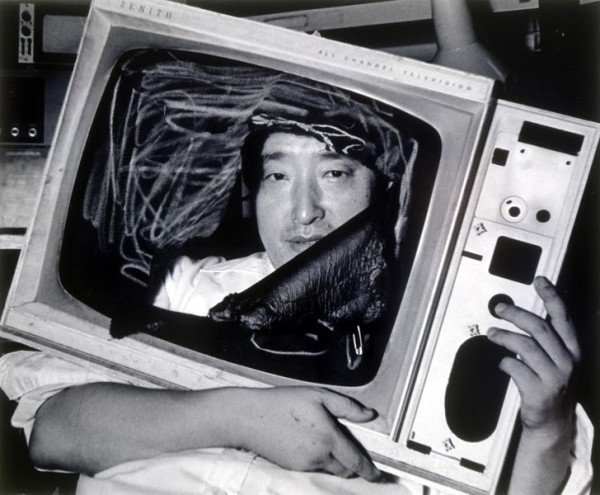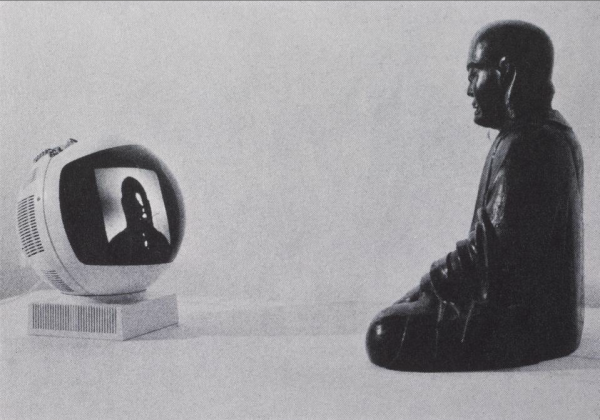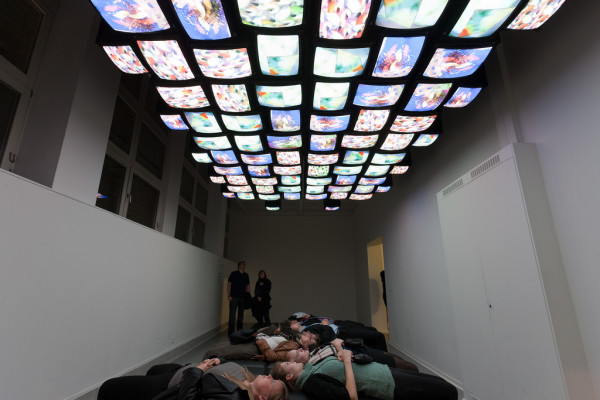With the ever increasing awareness on Korean music videos from the West, one could assume the rise is all because of their glossy productions values, addictive hooks, and smoking hot visuals. While many debate if K-pop’s popularity is the result of G-Dragon being the one of the greatest “artists” in the 21st century, SNSD hitting the ground running with cute girl concepts, or KARA shaking their butts into hearts everywhere, I want to propose an alternative side to the relationship between K-pop and its spread: YouTube and Nam June Paik.
YouTube is obviously vital to our online existence, and that’s especially true to K-pop fans, most of whom learned of the genre and helped it thrive through YouTube. Psy‘s “Gangnam Style“, an SNSD music video or the group winning a YouTube award, or even non-fans and fans reacting to or wanting to share their opinions on K-pop music videos. The list is endless and it’s all done through YouTube, but the origin of all this owes a debt to Nam June Paik.
Nam June Paik is the father of video/digital art, and whenever discussing K-pop artistically or critically, some credit has to go back to his ideas. Understandably, most people focus on the idol, the person putting on this persona for an audience, but part of what makes K-pop so appealing is that it the clear result of many talented artists working together to create digital art.
Nam June Paik invented that art during the Dada movement, and Paik is one of few Korean artists to properly influence your common Western artist with his work.
No artist had a greater influence in revealing the artistic potential lurking behind television’s flickering facade than Nam June Paik. Commonly hailed as the father of video art, Paik reshaped perceptions of the electronic image through a prodigious output of manipulated TV sets, live performances, global television broadcasts, single-channel videos, and video installations.
Paik’s ‘TV Buddha‘ (1974) — with its connection of creator, audience, and critic — compares well to the now commonplace YouTube reaction videos to K-pop.
“Participation TV … (the one-ness of creator, audience, and critic) is surely one probable way for this goal … and it’s not a small virtue.” Paik – “Video Synthesiser Plus” (1970)
As I said before, Paik rolled deep with the Dada crew, and more specifically he was involved with the Fluxus movement. The movement was inspired by John Cage, who was influential in bridging Paik, digital video, and music. During his lifetime, Paik was not only considered a Korean artist, but also a German and American artist. Paik impacted the artists around him with his work, which is a similar goal the current Hallyu movement appears to have.
“TV is as mass media as sex … TV culture is in the pre-Kinsey stage at this moment … public is just the Pavlovian dog for the network (presently). The infinite potentials of TV, such as; two-way communication, audience participation, “electronic demonomancy through instant referendum” (John Cage) … is by far ignored or delicately suppressed.” Paik – “Machine Show” (1974)
Paik understood the enormous potential of video art, and Paik’s ‘TV Garden‘ (1974) showed many of the types of symbolism seen in modern K-pop music videos.
Paik was so radically in-tune with the future of digital technology that he made up a concept/critique in which video would be vastly important later; his idea here was there would be place for a “public video system” which would be a “free exchange system” where it could be accessed globally.
Yes, Paik basically predicted YouTube and thought it would eventually be key to the dissemination of mass media … like K-pop. A Korean artist conceptualized the vehicle though which Korea would profit tremendously later as its pop culture rose to prominence. Thus, it’s sort of a shame that Paik is repeatedly ignored when discussing Hallyu, or even the digital internet medium in general, when it’s extremely likely the usage of video art and the whole concept of how it was going to be used as soft power originated from his mind.
Paik’s visual prediction is clearly present throughout his progression in his art, and since he was basically the inception of digital video, his art is never ending. Like George Orwell‘s ‘1984‘ and all the dystopian premises to follow, Paik is reflected in every iteration of digital art. He is our Internet father, and without him there might be no Hallyu (see how the J-pop industry approaches a similar issue), or even YouTube.
Paik’s ‘Fish Flies On Sky‘ (1983-85) referenced a digital art popular culture future, and a decade later, in a 1995 interview with him by Stephan Von Wiese, Paik again saw the potential of the new media; something called the Internet.
Von Wiese: “How did you learn video art?”
Paik: “I invented it. I finished with electronic music. Therefore, I had to do something. I was neither a painter nor a sculptor, neither a good composer.”
Von Wiese: “So you had to invent something?”
Paik: “Yes, there was no competition at that time.”
Von Wiese: “Do you think video art can be developed in the future?”
Paik: “Yes, with the Internet, very much.”
And so here we are on a blog dedicated to a movement that owes a great deal to Nam June Paik and his vision.
=====
Thanks to Asian Junkie’s ILostThePlot for the help with this.
 Asian Junkie Asian pop. Without discretion.
Asian Junkie Asian pop. Without discretion.




